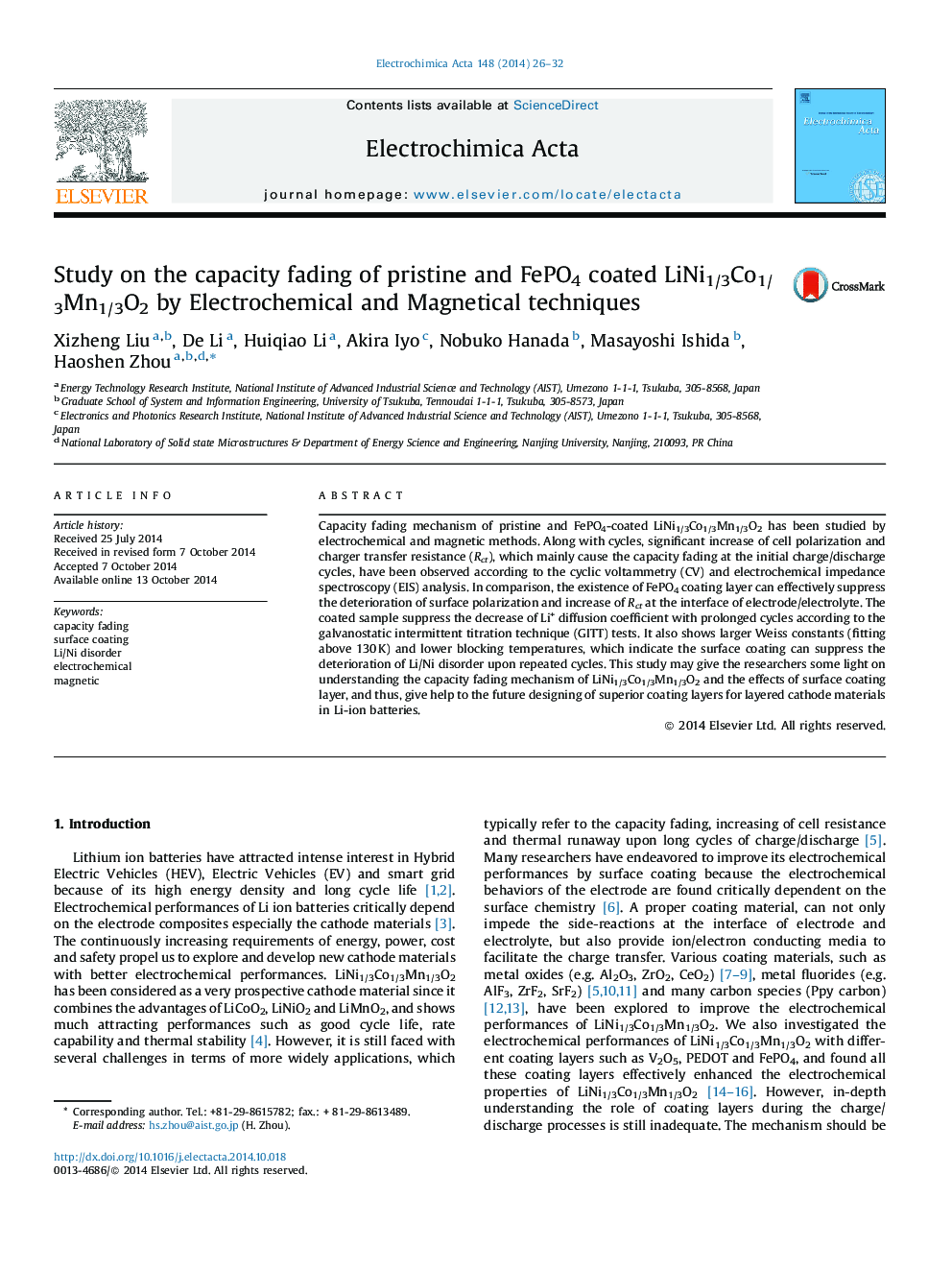| Article ID | Journal | Published Year | Pages | File Type |
|---|---|---|---|---|
| 184888 | Electrochimica Acta | 2014 | 7 Pages |
Capacity fading mechanism of pristine and FePO4-coated LiNi1/3Co1/3Mn1/3O2 has been studied by electrochemical and magnetic methods. Along with cycles, significant increase of cell polarization and charger transfer resistance (Rct), which mainly cause the capacity fading at the initial charge/discharge cycles, have been observed according to the cyclic voltammetry (CV) and electrochemical impedance spectroscopy (EIS) analysis. In comparison, the existence of FePO4 coating layer can effectively suppress the deterioration of surface polarization and increase of Rct at the interface of electrode/electrolyte. The coated sample suppress the decrease of Li+ diffusion coefficient with prolonged cycles according to the galvanostatic intermittent titration technique (GITT) tests. It also shows larger Weiss constants (fitting above 130 K) and lower blocking temperatures, which indicate the surface coating can suppress the deterioration of Li/Ni disorder upon repeated cycles. This study may give the researchers some light on understanding the capacity fading mechanism of LiNi1/3Co1/3Mn1/3O2 and the effects of surface coating layer, and thus, give help to the future designing of superior coating layers for layered cathode materials in Li-ion batteries.
Graphical abstractCapacity fading mechanism of pristine and FePO4-coated LiNi1/3Co1/3Mn1/3O2 have been studied by electrochemical and magnetic methods. The FePO4 coating layer takes effect in four aspects: suppress the surface polarization, hinder the increase of Rct at the interface of electrode/electrolyte, impede the decrease of Li+ diffusion coefficient and the deterioration of Li/Ni disorder with prolonged cycles.Figure optionsDownload full-size imageDownload as PowerPoint slide
